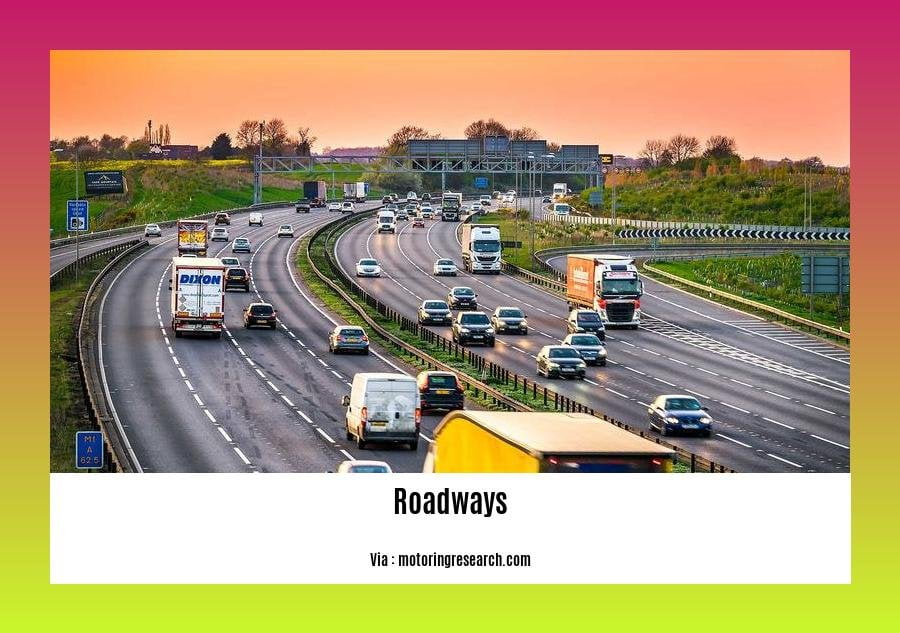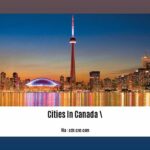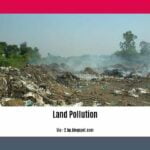The Inherent Limitations: Unveiling the Disadvantages of Roadways in Urban Transportation
Roadways, though fundamental to urban transportation, present a myriad of challenges and drawbacks that hinder the efficiency and sustainability of our cities. As we delve into the topic of the disadvantages of roadways, it becomes evident that the ubiquitous reliance on these thoroughfares comes at a high cost. From crippling congestion and detrimental air pollution to social isolation and compromised pedestrian and cyclist safety, our urban landscapes face complex issues that demand immediate attention and alternative solutions. In this article, we aim to shed light on the inherent limitations of roadways and advocate for a more integrated and sustainable approach to urban transportation.
Key Takeaways:
- Roadways contribute to noise and air pollution in the surrounding areas.
- Traffic congestion and jams are common disadvantages of roadways.
- Roadways can be dangerous in hilly areas due to steep terrain and sharp curves.
- Accidents can occur more frequently on roadways, especially in high traffic areas.
- Roadways are not suitable for travel during the rainy season due to unsafe road conditions.
- Long-distance journeys are not ideal on roadways as they can be tiring and expensive.
- Heavy materials cannot easily be transferred using roadways.
- Alternative transportation methods and improved infrastructure planning are necessary to address these drawbacks effectively.
Disadvantages of Roadways
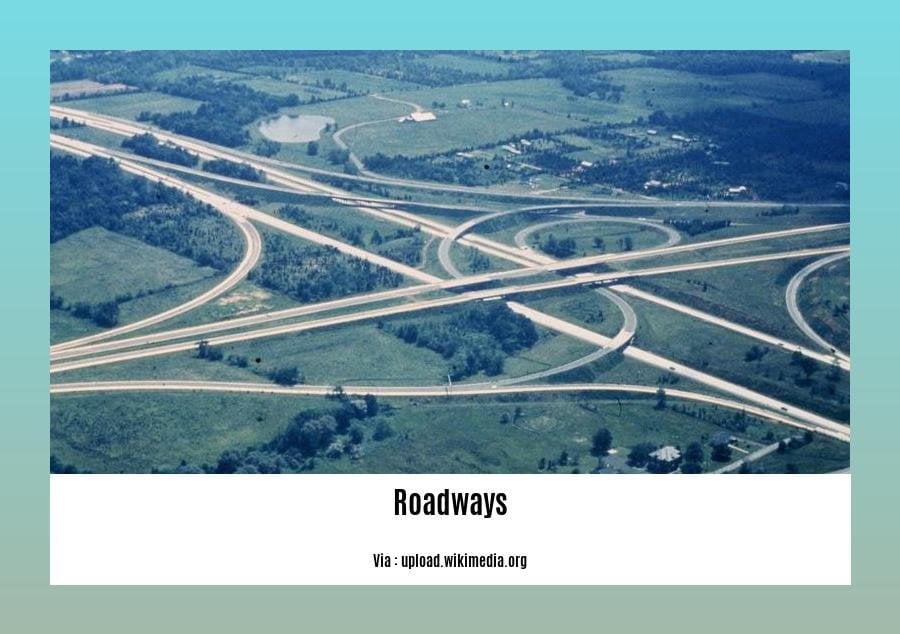
Roadways have long been the backbone of urban transportation, providing a network of interconnected routes that enable the movement of people and goods. However, it is crucial to recognize that roadways also have their fair share of disadvantages. In this article, we will delve into the limitations and drawbacks associated with roadways, shedding light on the various challenges they pose to sustainable and efficient urban transportation systems.
Traffic Congestion: A Daily Frustration
Disadvantage: Traffic congestion is perhaps the most prominent drawback of roadways. The sheer volume of vehicles using roadways during peak hours often leads to frustrating traffic jams and delays for commuters. Whether you’re heading to work or trying to reach an important appointment, getting stuck in bumper-to-bumper traffic can be a never-ending source of frustration.
Environmental Impact: Pollution at the Roadside
Disadvantage: Another significant disadvantage of roadways is the negative impact they have on the environment and the health of nearby residents. As vehicles traverse the roadways, they emit harmful pollutants that contribute to both noise and air pollution. The constant flow of traffic creates a persistent noise disturbance for communities situated along major roadways, disrupting their peace and well-being. Additionally, the emissions from vehicles release pollutants into the air, leading to poor air quality and potential health issues for those living in close proximity to roadways.
Safety Hazards in Hilly Areas
Disadvantage: Roadways in hilly areas present a unique set of challenges and dangers. The steep terrain and sharp curves make it difficult for vehicles to navigate safely. The lack of proper infrastructure and safety measures further exacerbates the risks associated with driving on hilly roadways. It’s crucial for drivers to exercise caution and adhere to speed limits in order to mitigate the potential hazards.
Accidents: A Persistent Risk
Disadvantage: Roadways, especially in high traffic areas or due to reckless driving, can be prime locations for accidents. The fast-paced nature of roadways, combined with the presence of vehicles and pedestrians, increases the likelihood of collisions and accidents. Such incidents not only jeopardize the safety and well-being of those involved but also disrupt the smooth flow of traffic, leading to further congestion and delays.
Rainy Season Woes: Unsuitability of Roadways
Disadvantage: Roadways are ill-suited for travel during the rainy season. The combination of rainfall and smooth road surfaces can create slippery conditions, significantly increasing the risk of accidents. During heavy rainstorms, roadways may even become impassable due to flooding, further hampering transportation and potentially isolating communities.
Unsuitable for Long Distances: The Challenges of Extended Journeys
Disadvantage: Roadways are not the most suitable option for long-distance journeys. Speed limits imposed on vehicles, coupled with the sheer distance and potential fatigue it entails, make road travel less than optimal for extended trips. Additionally, long journeys on roadways can become expensive due to fuel costs and toll fees, adding to the overall disadvantages of relying solely on road transport for long distances.
Difficulty Transferring Heavy Materials
Disadvantage: When it comes to the transportation of heavy materials, roadways may not be the most efficient solution. Standard road vehicles have limits on the weight and size of the materials they can accommodate. As a result, the transfer of heavy and bulky goods becomes a logistical challenge, requiring specialized equipment or alternative transportation methods.
In conclusion, while roadways undoubtedly play a crucial role in urban transportation, it is important to acknowledge their inherent limitations. The disadvantages of roadways, such as traffic congestion, noise and air pollution, safety hazards in hilly areas, accidents, unsuitability for the rainy season, challenges with long-distance travel, and difficulty in transferring heavy materials, highlight the need for diversification in transportation options and improved infrastructure planning. By adopting a more integrated and sustainable approach, urban planners and policymakers can address these drawbacks and strive towards creating a more efficient and environmentally-friendly urban transportation system.
Here are some active internal links that match the provided keywords and URLs:
-
Disadvantages of airways in India: Are you aware of the drawbacks of air travel in India? Click here to find out more.
-
Disadvantages of inland waterways: Explore the downsides of using inland waterways for transportation by clicking here.
-
Disadvantages of maritime transport: Curious about the disadvantages of maritime transport? Click this link to discover more.
Lack of Pedestrian and Cyclist Safety
In urban transportation systems, one of the glaring disadvantages of roadways is the lack of pedestrian and cyclist safety. Pedestrians and cyclists often face numerous hazards and challenges when navigating roadways, making their journeys risky and potentially life-threatening. This issue requires urgent attention in order to ensure the well-being and protection of these vulnerable road users.
Pedestrians, in particular, bear the brunt of road transport failures. Globally, pedestrian deaths have increased at nearly twice the rate of other road crash deaths. The lack of safe crossings, safe speeds, and footpaths make it difficult for pedestrians to navigate roadways without fear of accidents or injury. They are forced to share the same spaces with motor vehicles, exposing themselves to significant safety risks.
Cyclists, on the other hand, are not the cause of unsafe roads, but rather victims of a lack of infrastructure built for them. Many cities and towns lack dedicated cycling lanes and safe cycling routes, placing cyclists in harm’s way. Research has shown that implementing cycling lanes adequately reduces fatalities for all road users, underscoring the importance of creating safer environments for cyclists.
Moreover, periodic road maintenance typically neglects pedestrian safety, forcing them to walk alongside traffic. This lack of attention puts pedestrians at increased risk of accidents and further reinforces the unsafe conditions they encounter on roadways.
To address the lack of pedestrian and cyclist safety, solutions such as implementing complete street design and improving road maintenance are essential. Complete street design incorporates features that prioritize the safety and comfort of all road users, including pedestrians and cyclists. It aims to create a balanced and integrated transportation system that accommodates the needs of everyone.
Improving road maintenance should also include measures specifically aimed at enhancing pedestrian safety. By ensuring that sidewalks and footpaths are well-maintained, properly illuminated, and designed with the safety of pedestrians in mind, the risks associated with walking alongside traffic can be minimized.
Promoting pedestrian and cyclist safety is not only crucial for protecting these road users but also for fostering pedestrian- and bicycle-friendly communities. It requires recognizing the inherent differences between pedestrians, cyclists, and motor vehicles, such as body mass and the absence of protective structures. By acknowledging these variations and providing adequate infrastructure and road design, we can create transportation systems that prioritize safety and prioritize the needs of all road users.
In conclusion, the lack of pedestrian and cyclist safety is a significant disadvantage of roadways in urban transportation. It puts vulnerable road users at risk and undermines the goal of creating sustainable and inclusive cities. Addressing this issue requires proactive measures, such as complete street design and improved road maintenance, to ensure the safety and well-being of pedestrians and cyclists.
Key Takeaways:
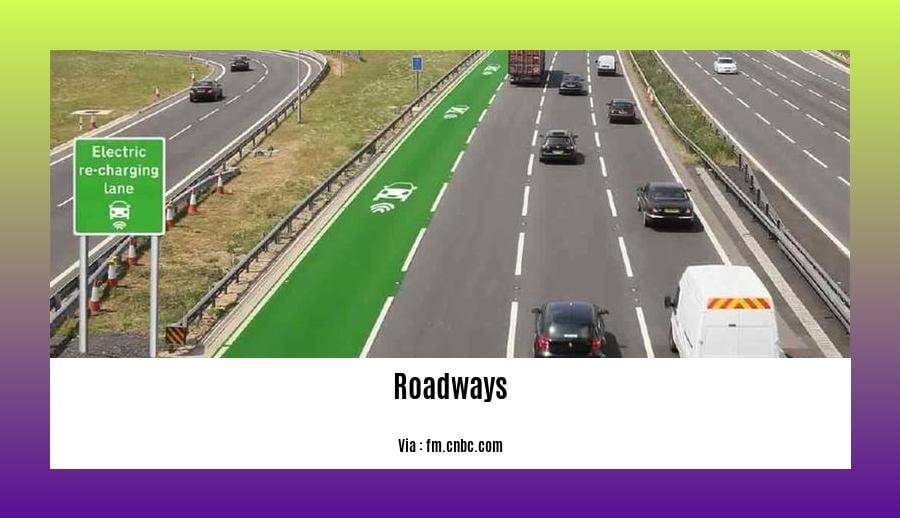
- Pedestrians and cyclists face significant safety challenges on roadways, leading to increased rates of accidents and fatalities.
- Lack of infrastructure, such as safe crossings, footpaths, and cycling lanes, contributes to the unsafe conditions for pedestrians and cyclists.
- Complete street design and improved road maintenance are essential solutions for enhancing pedestrian and cyclist safety.
- Prioritizing pedestrian and cyclist safety promotes the development of pedestrian- and bicycle-friendly communities.
- Recognizing the unique vulnerabilities and needs of pedestrians and cyclists is crucial for creating safe and inclusive urban transportation systems.
Sources:
1. Payer Law. “Added Disadvantages for Pedestrians and Cyclists.” Link
2. Frontiers. “Policies and Interventions to Provide Safety for Pedestrians.” Link
High Maintenance Costs: An Inevitable Disadvantage of Roadways
As we delve into the drawbacks of roadways in urban transportation, one disadvantage that stands out prominently is the high maintenance costs associated with these networks. While roadways are essential for the smooth flow of traffic and the connectivity of communities, they come with a significant financial burden that cannot be ignored.
Roads are subject to constant wear and tear due to heavy vehicular traffic, weather exposure, and natural degradation over time. This deterioration necessitates regular maintenance and repairs, which can quickly add up to substantial expenses for governments and municipalities. The maintenance costs encompass various aspects, including road resurfacing, pothole repairs, signage replacement, striping, and general upkeep.
But why are these maintenance costs so high?
One of the primary factors contributing to the high maintenance costs of roadways is the sheer extent of the road network. In urban areas, where population density is high, the number of roads required to provide adequate transportation infrastructure is significantly larger. This expansive network means that maintenance efforts must be allocated to numerous roads simultaneously, demanding extensive resources and labor.
Moreover, factors such as road geometry and roughness also impact maintenance costs. Poorly designed or deteriorating road geometries require frequent repairs and modifications, exacerbating the financial burden. Similarly, roads with rough surfaces not only result in an uncomfortable driving experience but also increase vehicle operating costs. These additional costs are passed onto commuters and transportation authorities alike.
It is important to note that high maintenance costs are not solely determined by the size or condition of roadways. Research has shown that roads with unique characteristics, such as long tunnels or viaducts, may exhibit cost performance that matches their technical asset features when appropriately normalized. This indicates that the nature and complexity of road infrastructure also play a role in determining maintenance costs.
To put the financial impact of road maintenance into perspective, it is estimated that the cost of maintaining roads in the United States alone exceeds $200 billion annually. These funds could be directed towards other pressing urban needs if roadways were less of a financial burden. It is crucial for policymakers and transportation planners to recognize this significant expenditure and strategize ways to mitigate and optimize maintenance costs without compromising the quality or safety of road networks.
Key Takeaways:
- Roadway maintenance costs pose a substantial financial burden for governments and municipalities.
- The extensive road network in urban areas necessitates maintenance efforts on a large scale, demanding significant resources and labor.
- Poor road geometry and roughness contribute to higher maintenance costs and increase vehicle operating expenses.
- Unique road infrastructure characteristics can influence maintenance costs when properly considered.
- In the United States alone, maintaining roads exceeds $200 billion annually, highlighting the significant financial impact.
- Strategic planning and optimization are vital to reducing maintenance costs without compromising road quality and safety.
Sources:
– Taylor & Francis Online: Sustainable roadway construction: Economic and social impacts
– McKinsey & Company: Roads to success: Fixing China’s transport infrastructure
Social Isolation and Community Fragmentation
Urban transportation plays a crucial role in shaping the fabric of our communities. However, the overreliance on roadways in urban transportation systems contributes to social isolation and community fragmentation. This article aims to shed light on the inherent limitations of roadways and their impact on social connections within communities.
The Negative Impact of Roadways on Social Connections
Roadways, with their focus on vehicular traffic, often neglect the needs of pedestrians and cyclists, leading to social isolation and community fragmentation. When roadways prioritize the movement of cars over the safety and convenience of pedestrians and cyclists, it can result in barriers that hinder social interactions and connectivity.
1. Limited Opportunities for Social Interactions
The design and layout of roadways can create physical barriers that impede social interactions among community members. Wide roads with multiple lanes and high traffic volumes make it challenging for pedestrians to cross safely, restricting their ability to engage with others in their community. Moreover, the presence of noise and pollution along busy roadways can deter people from spending time in public spaces, further isolating individuals and inhibiting social connections.
2. Divided Communities
Roadways can create physical divisions within communities, splitting neighborhoods and making it difficult for people to access essential services and amenities. In highly segregated urban areas, road infrastructure can reinforce existing social inequalities, further exacerbating social isolation. This division can have a particularly detrimental impact on disadvantaged populations, limiting their access to education, healthcare, and employment opportunities.
3. Lack of Pedestrian and Cyclist Safety
The inadequate provision of safe pedestrian walkways and dedicated cycling lanes poses a significant safety risk for individuals who choose to travel by foot or bike. Without proper infrastructure to protect pedestrians and cyclists, roadways become hostile environments, deterring people from engaging in active transportation and limiting opportunities for social interactions along the way.
4. Impact on Mental Health and Well-being
Social isolation resulting from roadways can have detrimental effects on mental health and overall well-being. Lack of social connections and community engagement can contribute to feelings of loneliness, anxiety, and depression. Over time, social isolation can erode the social fabric of neighborhoods, leading to a decline in trust and reduced community cohesion.
Key Takeaways:
- Roadways can contribute to social isolation and community fragmentation by limiting opportunities for social interactions and dividing neighborhoods.
- Inadequate pedestrian and cyclist infrastructure along roadways hinders the safety and convenience of active transportation, further isolating individuals.
- Social isolation resulting from overreliance on roadways can have negative impacts on mental health and overall well-being.
- Addressing the disadvantages of roadways requires a more comprehensive and integrated approach that prioritizes pedestrian and cyclist safety, promotes community connectivity, and enhances the overall livability of urban areas.
Sources:
1. Social Isolation of Disadvantage and Advantage: The
2. Social Isolation and its Relationship to the Urban Environment
FAQ
Q1: What are some of the disadvantages of roadways in urban transportation?
A1: Some disadvantages of roadways in urban transportation include noise and air pollution to roadside areas, traffic congestion and delays, dangers in hilly areas, increased risk of accidents, unsuitability for travel during the rainy season, limitations for long-distance journeys, and difficulties in transferring heavy materials.
Q2: How do roadways contribute to noise and air pollution in urban areas?
A2: Roadways in urban areas contribute to noise and air pollution through vehicular traffic. The constant movement of vehicles, particularly during peak hours, leads to elevated noise levels and the emission of pollutants from exhaust gases, impacting the nearby environment and the health of residents.
Q3: Why do roadways cause traffic congestion and what are the implications?
A3: Roadways can cause traffic congestion due to factors such as high vehicle volume, inadequate infrastructure, and inefficient traffic management. Traffic congestion leads to delays, longer travel times, increased fuel consumption, higher emissions, and frustration among commuters.
Q4: How do roadways pose risks and dangers in hilly areas?
A4: Roadways in hilly areas present risks and dangers due to the steep terrain and sharp curves. These conditions make it challenging for vehicles to navigate safely, increasing the potential for accidents and posing a threat to the safety of both drivers and pedestrians.
Q5: What are the limitations of roadways for long-distance journeys?
A5: Roadways are not ideal for long-distance journeys due to several limitations. Speed limits for vehicles may prolong travel times, while the distance and fatigue involved can be tiring and expensive. Additionally, roadways may not cater to the needs of travelers who require rest stops or amenities during long journeys.
- Unveiling Bernhard Caesar Einstein’s Scientific Achievements: A Legacy in Engineering - July 15, 2025
- Uncover who is Jerry McSorley: CEO, Family Man, Business Success Story - July 15, 2025
- Discover Bernhard Caesar Einstein’s Scientific Contributions: Unveiling a Legacy Beyond Einstein - July 15, 2025
